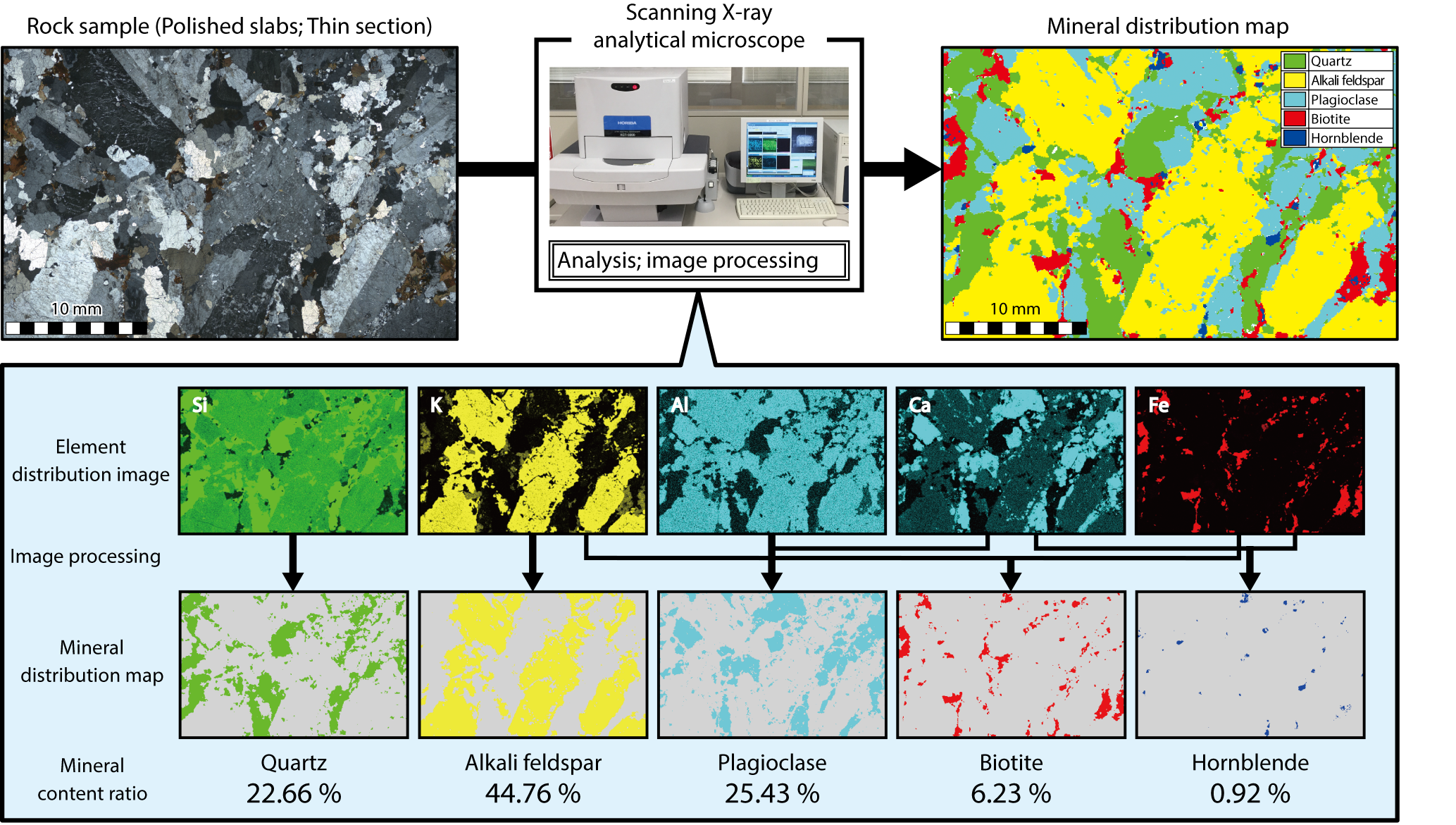
Fig.8-18 Analysis overview
The modal composition (mineral content ratio) of a rock is the principal characteristic for its petrological study and it is generally analyzed by the point-counting method on a thin section (a sliced and polished rock sample adhered to a piece of glass), observed using a polarizing microscope. However, this method is time-consuming and depends on the user’s mineral identification ability. Therefore, a quicker and simpler method, which would be blind to the user’s ability, is required. Here we introduce an alternative method employing a scanning X-ray analytical microscope (SXAM) and image processing software. We apply this method to granitic rocks composed of quartz, alkali feldspar, plagioclase, biotite, and hornblende.
In this new method, we first scan a rock sample (using a thin section or a polished slab) using SXAM to obtain element distribution images (Fig.8-18). SXAM is a device that can measure surficial element concentration using X-ray irradiation. Automatic measurement is performed for approximately 18 hours to obtain distribution images of the major elements found in granitic rocks (Si, K, Al, Ca, and Fe). We developed a suitable superposing technique using commercially available software for image processing to create the mineral distribution map (Fig.8-18). Then, the mineral content ratio is calculated based on the obtained map using other software. The image analysis of the map provides the spatial distribution of each mineral, after which the modal composition can be calculated (Fig.8-18). This method can be established as a routine, and the actual work time needed to complete the process is between 30 and 60 minutes.
The modal composition calculated by this method is almost completely equal to that of the point-counting method performed on the same sample by an expert. By using this method, the quantitative modal composition based on element concentration can be obtained efficiently in a short time, regardless of individual ability for mineral identification. In addition, this method can be applied not only to granitic rocks, but also to other plutonic rocks and hypabyssal rocks, so long as the rocks are composed of multiple kinds of minerals with a grain size larger than 100 µm and with different chemical compositions.
This work was a part of the result of the “R&D program supporting the development of technology for geological disposal of high-level radioactive waste”, supported by the Agency of Natural Resources and Energy (ANRE), the Ministry of Economy, Trade and Industry (METI), Japan.